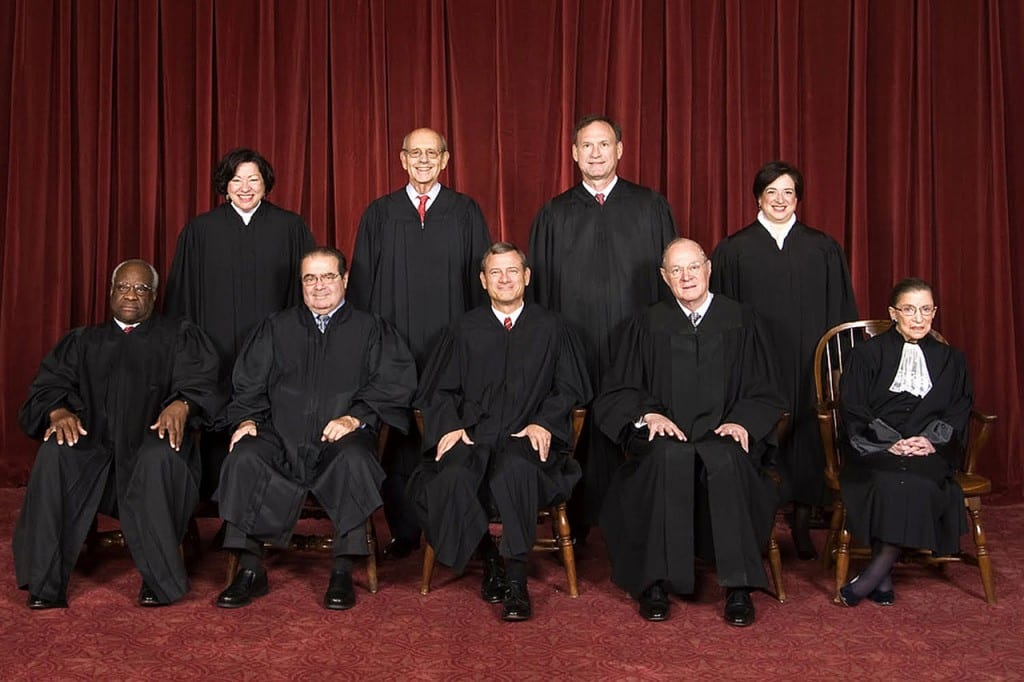SUPREME COURT DEADLOCK AFFIRMS LOWER COURT DECISION HOLDING LENDERS THAT
REQUIRE SPOUSAL LOAN GUARANTEES DOES NOT VIOLATE GENDER DISCRIMINATION LAWS
 The issue in the Supreme Court Case of Hawkins v Community Bank of Raymore is whether the Federal Reserve has the power or authority to determine in 1985 whether spousal guarantors could bring an action for Discrimination, despite the fact such a right was not provided for in the Equal Credit Opportunity Act. The Act, which applies to applicants of loans, brings the question of whether a guarantor qualifies as an applicant, and therefore subject to the protections provided for in the same Act.
The issue in the Supreme Court Case of Hawkins v Community Bank of Raymore is whether the Federal Reserve has the power or authority to determine in 1985 whether spousal guarantors could bring an action for Discrimination, despite the fact such a right was not provided for in the Equal Credit Opportunity Act. The Act, which applies to applicants of loans, brings the question of whether a guarantor qualifies as an applicant, and therefore subject to the protections provided for in the same Act.
With the absence of Antonin Scalia, the United States Supreme Court reached a 4-4 deadlock in the case of Hawkins v Community Bank of Raymore (Case No 14-520). The tied decision results in the Affirmation of the lower Court’s decision in the matter.
Raymore was brought by the wives of two businessmen in Missouri who sought to prevent the Community Bank of Raymore from seeking the collection from them of two loans taken by their husbands, the monies of which were used to invest in a failed real estate venture. The women argued that by requiring them to guarantee the loans taken by their husbands, the Bank of Raymore violated the Federal Reserve’s expansion of the Equal Credit Opportunity Act, which prohibited in some instances, discrimination against women applicants based on their marital status.
The Eighth Circuit Court Affirmed the lower Court decision, holding that the Equal Credit Opportunity Act does not apply to guarantors of loans since such persons are not applicants under the law. The Eight Circuit held that the Federal Reserve improperly included guarantors under the protections provided in the Equal Credit Opportunity Act, because guarantors are not applicants, as they are not directly involved in the process of applying for a loan, and not subject to direct Discrimination.
Because the Supreme Court reached a 4-4 tie in the Raymore Case, the Eighth Circuit Court decision was effectively Affirmed by the Supreme Court. This decision contrasts with decisions in other Courts, notably the Sixth Circuit Court, and with State Court decisions in Alaska, Missouri, Virginia, and Iowa.
John Duggan, an Attorney representing Hawkins, argued before the Supreme Court:
“Well, I think it’s very important because regulators made a reasonable interpretation under their broad grant of authority that when they’re required, when a condition is placed upon their approval, that they have to come forward and be contractually obligated to repay the applied-for debt, they are an applicant”.
The Community Bank of Raymore maintained that the definition of applicant is clear, and does not apply to guarantors.
Even some of the more liberal members of the Supreme Court questioned the definition of applicant, as argued by the Plaintiffs and the government, which entered on the side of the Plaintiffs. Justice Stephen Breyer:
“Now, it seems to me maybe you’re pushing the edge of the word applicant as they didn’t intend it in the statute. That’s a problem”.
Elena Kagan questioned Brian Fletcher, an assistant to the Solicitor General arguing on behalf of the government, on whether permitting spouses to bring such actions, creates liabilities on a level not anticipated by Congress, by allowing a guarantor to have the entire loan declared invalid, and not subject to collection by the bank or lender.
It is likely if Antonin Scalia was alive to render an opinion in this matter that he would have found in favor of the Raymore Bank, and against the Plaintiffs. With Scalia’s absence, the eventual 4-4 tie means that the lower Court decision in favor of Raymore Bank stands. This gives essentially the same result as would have occurred had Scalia been present to tip the scale. However, the Supreme Court only permitted the Eight Circuit Case to remain unaffected. The Sixth Circuit Court Case and other contrary Court decisions are also unaffected by the 4-4 split on the Supreme Court.
Image credit: wikipedia

